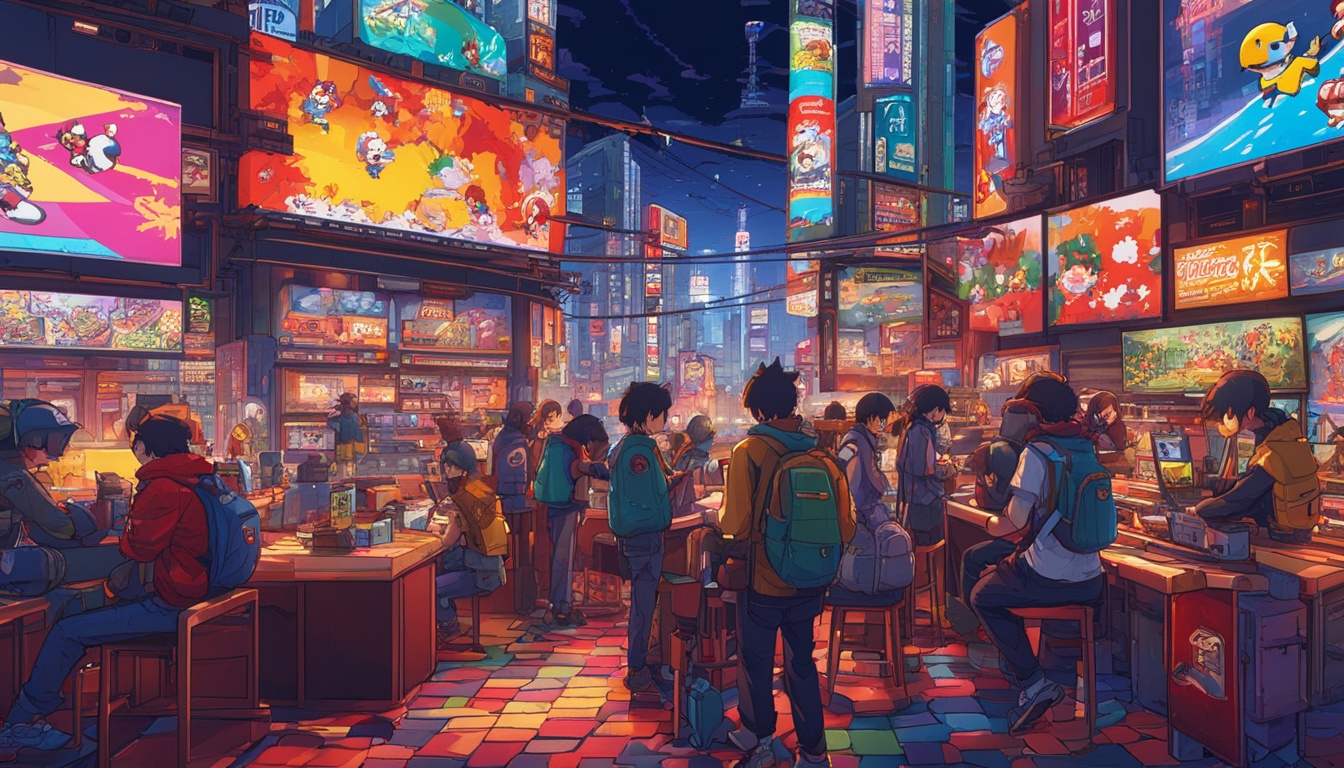Do you know how Japan’s game design scene has influenced the world? Japanese developers are known for their innovation and unique creative style. Let’s dive into what makes their game design stand out.
Key Takeaways:
- Japanese game design emphasizes pacing, engagement, and rising action leading to an intense climax.
- The Jo-Ha-Kyu storytelling structure has a significant influence on Japanese game design.
- Maintaining player engagement throughout the game is crucial.
- Goichi “Suda51” Suda has played a major role in pushing the boundaries of game design in Japan.
- Grasshopper Manufacture, founded by Suda, is known for its unconventional and artistic approach to game development.
The Pacing of Games: A Japanese Playwright’s Perspective
Pacing in game design is key to the player’s experience. Japanese developers have learned from Japanese theater like kabuki and noh. They use a style called Jo-Ha-Kyu, where the tension slowly builds to a high point.
Japanese game makers have smoothly applied this theatrical style to their games. Following Jo-Ha-Kyu, they create games that keep players engaged throughout.
“The pacing of a game is like a well-scripted play, where each act builds upon the previous one, drawing players deeper into the narrative.” – Japanese playwright
I met an 87-year-old Japanese playwright and learned how crucial pacing is in games. He’s talented in playwriting, designing sets, and painting. Our talk for two hours was mainly about how storytelling’s pacing affects people.
This playwright advised reading King Lear to understand pacing’s power. He loves how King Lear’s story unfolds, making you really feel its climax. A game developer found this advice very helpful for his work too.
The Japanese playwright worked closely with Edward Gorey, a famous artist. Gorey’s unique art inspired the developer’s first game, adding a rich visual layer to its story.
“As a developer, seeking validation for my work is something I often yearn for. Conversations with respected individuals like the Japanese playwright have reaffirmed my passion for game design and the power of pacing in telling captivating stories,” said the developer.
Whether games are considered art is still debated. But, combining theater and game design through pacing shows games’ artistry. This fusion makes games capable of impactful stories.
The Impact of Pacing on Player Engagement
Jo-Ha-Kyu principles significantly impact how players are drawn into games. A well-paced narrative captivates players and emotionally connects them to the game.
Comparing games with different narrative styles shows how pacing affects player involvement. Controlled pacing in linear games enhances the story’s impact. On the other hand, in non-linear games, careful pacing is needed to maintain player interest.
Interactive poems and games that use exploration as storytelling highlight the importance of pacing. They offer a unique, immersive experience by letting players uncover the story themselves.
Integrating Pacing into Game Design: Insights and Challenges
Integrating pacing into game design is challenging. It involves keeping the player engaged while giving them freedom. Balancing these elements is crucial.
The linear approach, like in Ocarina of Time, leads players through a curated experience. Non-linear mediums, such as manga adaptations, offer different views of the story’s universe.
Games that mix storytelling and gameplay well often owe their success to good pacing. Pacing connects the game’s mechanics to its story, making a complete experience.
The Role of Writers in Game Development
Storytelling is more and more important in games. Writers bring their skills to the table, helping make games with great narratives and pacing.
Writers and developers working together is a growing trend. Their collaboration ensures stories are told well, with pacing that fits the game’s vision.
The Future of Pacing and Game Design
The future of gaming will keep pacing at its core. Clever use of pacing will keep players engaged and thrilled in new ways. Exploring new pacing techniques will lead to innovative games.
The Influence of Japanese Theatrical Structure on Gameplay
Japanese game design is tied to the country’s rich cultural traditions. This includes the Jo-Ha-Kyu, a traditional theatrical structure. It has greatly affected how games are made in Japan, changing how games flow and feel.
Jo-Ha-Kyu is about things starting slow, picking up speed, then hitting a climax fast. This builds tension and excitement over time. It also keeps players glued to the game, eager to see what happens next.
Some games, like Community PlanIt, use Jo-Ha-Kyu to keep things interesting. They do this by adding pressure and making the story exciting. This keeps players on their toes and rewards them for playing.
If a game doesn’t follow Jo-Ha-Kyu, players might get bored. They might find the end sudden or not exciting. This can make players less likely to keep playing or tell others about the game.
To make games more Jo-Ha-Kyu, developers can use a few tricks. They can start with a bang, slowly build up tension, and keep the game balanced. They can also make sure every move the player makes affects how the game ends. This makes the game more fun and keeps players interested.
Games that embrace the Jo-Ha-Kyu structure have the potential to captivate players from beginning to end, leaving a lasting impact and fostering a sense of accomplishment.
The Historical Context
Using the Jo-Ha-Kyu structure shows how Japan’s culture and economy influenced the video game industry. After World War II, Japan grew economically, making video game development possible. Trade with the US helped this industry grow too.
This industry pulls from many areas like arcades, toys, and comics. A mix of global and local ideas made Japan’s gaming culture unique. This culture continues to grow and change with time.
People wanting to make games in Japan can learn at places like Kyoto Seika University. It offers classes in Game Design by people like Kenichi Nishi, who directed “Chibi-Robo!” The school attracts those interested in Japanese pop culture.
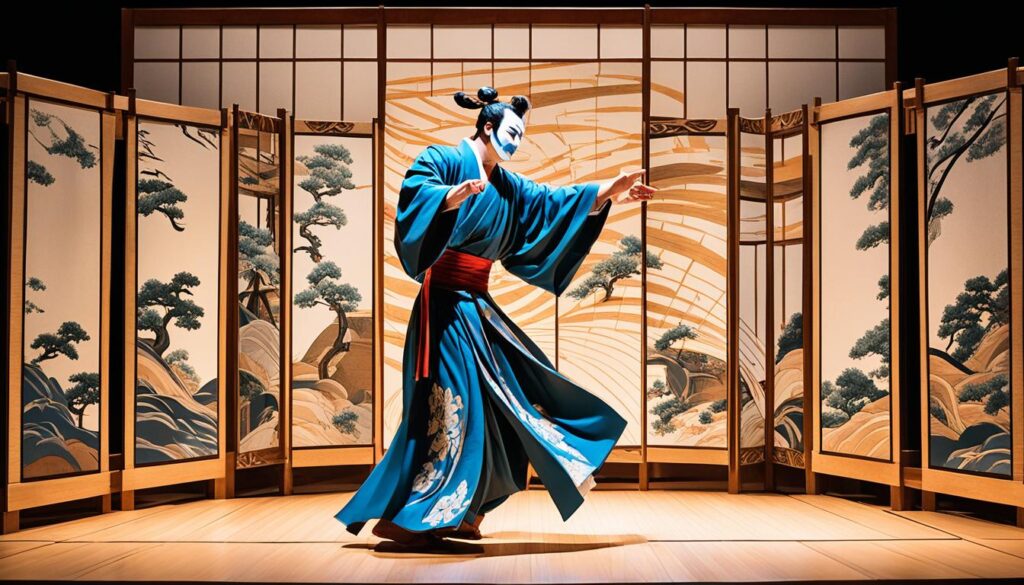
The Far-Reaching Impact
Japanese game design has a big effect outside Japan. Companies have made their mark in North America and Europe. They’ve inspired game makers around the world to try new things.
Japan is also known for great character design. Artists like Kosuke Fujishima and Yoji Shinkawa are famous for RPG characters. Japan’s characters are popular in many forms of media.
To sum up, Japan’s traditional theater style, especially the Jo-Ha-Kyu, has changed game design. It makes games more thrilling and keeps players hooked. As the game industry grows, Japan’s design influence continues to shape games around the world.
How Japanese Game Design Differs from Western Game Design
Japanese and Western game designers approach their craft very differently. Japan focuses a lot on storytelling and building characters. In contrast, the West puts more weight on player freedom and choice.
These different approaches lead to varied gaming experiences. Japanese games are known for their deep stories and characters. On the other hand, Western games offer huge worlds for players to explore.
Japanese games are also known for their technical quality. Hits like Demon’s Souls are praised for being very stable and detailed. This can mean fewer bugs compared to games like Borderlands 2.
“Japanese games are known for their technical excellence and overall polish. In contrast, Western games may sometimes sacrifice technical performance for open-world freedom and extensive gameplay mechanics.”
Good Japanese games often choose a strong design theme over modern ease. They introduce unique gameplay features that define their style. Think Resident Evil’s tank controls or Street Fighter’s special move inputs.
Another key difference is the rule systems in Japanese games. They tend to use more abstract rules. Western games, in comparison, often focus on making things as close to real life as possible.
“Japanese games often have abstract rule systems that require players to learn and understand the game’s mechanics deeply. This creates a unique sense of challenge and rewards players who invest time in exploring the intricacies of the game.”
Character design is also a big point of departure. While the West wants real-looking characters, Japan aims for depth. This means Japanese games present characters with rich stories and unique designs.
The split in game design started early on. Japanese games, starting on consoles, valued fun play over realistic looks. In contrast, Western games on PCs aimed to be like real life.
“The design mentality of console-based Japanese games influenced the emphasis on gameplay mechanics and unique storytelling, while Western PC games paved the way for realistic simulations and expansive open-world experiences.”
Today, these early differences still impact game design. Japan stays true to its gameplay-focused traditions, while the West pushes technology and big worlds. Both these traditions shape the future of gaming.
| Forum Posts | Wiki Points | Followers | User Lists |
|---|---|---|---|
| 2522 | 0 | 0 | 0 |
| 1666 | 23283 | 0 | 10 |
| 6616 | 49 | 0 | 13 |
| 2522 | 0 | 0 | 0 |
| 1392 | 0 | 0 | |
| 16687 | 26 | 0 | 8 |
| 3608 | 20 | 0 | 0 |
| 6420 | 45 | 0 | 0 |
| 3000 | 81 | 0 | 7 |
| 1744 | 12 | 0 | 6 |
| 6901 | 40352 | 0 | 20 |
There’s a lot of online talk about the Japanese and Western design divide. On forums, gamers discuss the approaches of both sides. This shows a strong interest in Japanese design.
The future is bright for Japanese game design. With a focus on innovation, Japanese games offer unique experiences. Their design choices will continue shaping the gaming world.
The Artistic Vision of Goichi “Suda51” Suda
Goichi “Suda51” Suda stands out in the gaming world. He’s the brain behind Grasshopper Manufacture. Known for his offbeat and cutting-edge games, he captivates players. His approach blends unique stories with fresh gameplay.
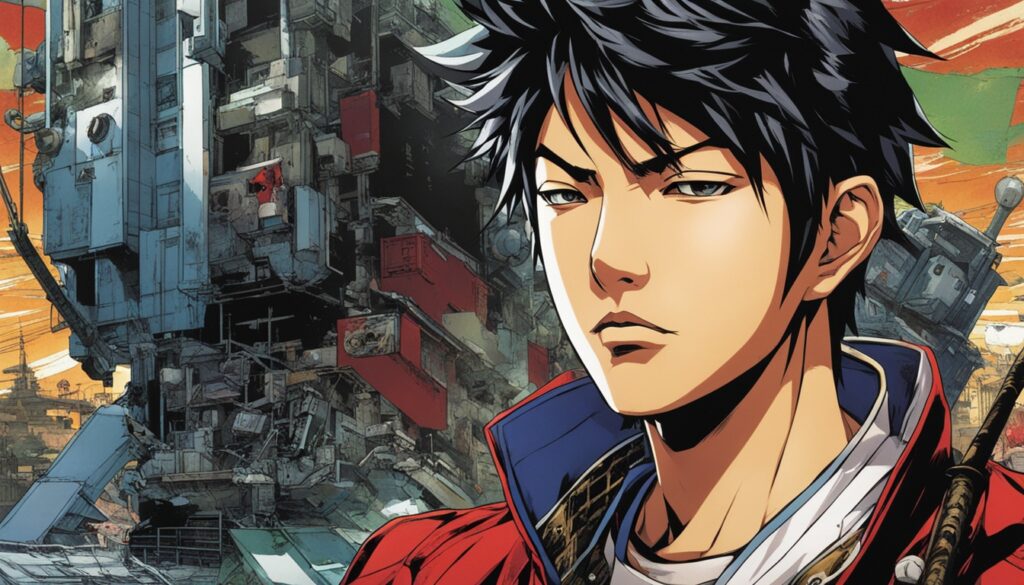
His passion started at Sega as a graphic designer. Soon, he moved into making games. His work gained attention, giving him the chance to explore his ideas freely. His game Moonlight Syndrome focused on fear.
Suda’s first game at Grasshopper Manufacture, The Silver Case, is a mystery gem. It pulls players into a deep, intricate story.
Suda’s Flower, Sun, and Rain showed his growth. With a bigger team, he let his creativity loose. He didn’t just work for his own company. Games like Shining Soul II for the Game Boy Advance proved his adaptability.
Michigan: Report From Hell was his next big thing. It let players control a camera operator in a horror setting. Yet, it was his work on Killer7 that really turned heads. This game gave him full creative freedom. Killer7 stands out for its story and game design innovations.
Suda’s games, like Killer7 and No More Heroes, push boundaries. They tackle deep themes with unique stories and characters.
Suda51 aims to make heroes that stand out. He wants to shift away from common game character clichés. He believes in creative freedom to make exceptional games.
His creative stream hasn’t slowed. He’s looking back at Michigan for new ideas. This could mean a whole new game or a remake for modern platforms. Suda’s work delves into deep topics, making players think.
For Suda, inspiring others is a big deal. He shares his fashion sense and early dreams of being a sushi chef or astronaut. This personal side shows his journey from odd dreams to success. It inspires those wanting to work in games.
Suda51’s approach to gaming has left a mark. His games, though not always big hits, are loved. They show that fresh thinking and deep storylines matter in gaming.
The Journey of Goichi “Suda51” Suda in Game Design
Before becoming famous in game design, Goichi “Suda51” Suda tried many jobs. He was a graphic designer and worked on Sega’s brochures. But it was when he played Sega’s Virtua Racing that he fell in love with making games. He found his true calling in game development and never looked back.
In 1998, Suda51 started Grasshopper Manufacture. The studio became known for its out-of-the-box games. Each game showed Suda51’s unique ideas. They aimed to connect with players on deep levels, both in thought and feeling.
Grasshopper Manufacture grew quickly. It now has about 50 people sharing their talents. The team works hard to make games that matter to people.
Suda says the team adjusts their style to fit each game’s needs. This way, they can make a wide range of games, each with its own special touch.
The studio changes its approach based on the game they’re making. Some are like traditional games, while others, like the Samurai Champloo series, stand out. These differences show the team’s creativity in making varied games.
Suda51 gets ideas from movies, too. The movie “El Topo” inspired him for the game No More Heroes. This mix shows his skill in blending different art forms into his games.
Grasshopper Manufacture wants its games to appeal to Western audiences. Suda51 knows how important this is. Their success overseas shows they’re doing something right.
Suda thinks the West is a key market for them. Games like Okami do well because Western players embrace new ideas more than Japanese players do.
The studio is excited about adding adventure elements to its games. Suda51 likes these elements because they remind him of his early work. He also admires other adventure game makers like Hideo Kojima.
Suda51 believes in making games that Westerners will love. He sees how tastes differ in various markets. By staying flexible and aware of trends, Grasshopper can keep making games people enjoy.
As Grasshopper Manufacture turns 25 this year, it stands with big names in gaming. The studio is known for its original games. Success for them is about making games that are truly unique and special.
| Year Founded | Founder | Key Milestone |
|---|---|---|
| 1998 | Goichi “Suda51” Suda | Established Grasshopper Manufacture |
| 2007 | Goichi “Suda51” Suda | Released No More Heroes, which achieved mainstream success |
| 2023 | Goichi “Suda51” Suda | Celebrated 25th anniversary in the gaming industry |
Filmmakers like Alejandro Jodorowsky and Takashi Miike deeply influence Grasshopper. They aim to create games that stay with you. By telling stories in fresh ways, they make experiences that change how we see games.
Suda51 is inspired by bold filmmakers. He even dreams of making games from classic writings, showing his and the studio’s daring vision.
Grasshopper likes to work with top directors. For Lollipop Chainsaw, they teamed up with James Gunn. Suda51 enjoys such collaborations.
He also looks up to Takashi Miike, showing in their games. Though some plans with Takeshi Kitano fell through, Suda51 keeps the spirit of working with great filmmakers alive.
Join us in the next section as we explore the creative process behind Grasshopper Manufacture games – an in-depth look into how this studio brings their imaginative visions to life.
The Creative Process Behind Grasshopper Manufacture Games
Grasshopper Manufacture stands out with its unique games. They use an artistic style that differs from others. They are known for pushing limits and creating new experiences for players.
Many different professionals work together to make their games. This includes developers, designers, and storytellers. Their goal is to craft worlds and stories that catch players’ hearts and minds.
Their storytelling comes from many sources. These include movies, books, and even theater. They make their games visually and aurally distinct. This makes players feel like they’re in a whole new world.
They also focus on game mechanics that make players feel deeply. Grasshopper Manufacture’s games break the mold with new and surprising features. Their endings often shock players and leave a big impression.
Every part of their games is made with care. This ranges from the look of characters to the layout of levels. They want to pull players in from the very first moment they begin.
They listen closely to what players say during the game-making process. This feedback shapes their games. It helps make sure the final product is exactly what players want.
Their way of creating games shows how much they care about being fresh and engaging. By working together and adding unique features, they keep players’ attention. They’re always finding new ways to excite people with their games.
| Data | Handling |
|---|---|
| Grasshopper Manufacture Inc. is the sole handler of information collected on their site. | All personal data collected, including users’ IP addresses, cookie information, and pages visited, is recorded automatically. |
| Official documents may be requested offline to prove users’ identity. | Personal data is used solely to provide services and for occasional updates on new services. |
| Cookies are used to personalize user experiences and for some advertising purposes. | Access logs are analyzed for trends and site management, not linked to identifying information. |
| Personal data is not disclosed to third parties unless required by law or for specific reasons as outlined in the policy. | Grasshopper Manufacture Inc. takes various security measures to protect personal data. |
| Users have the right to request disclosure or suspension of use of their personal information. |
Grasshopper Manufacture also believes in keeping players’ data safe. They follow strict rules to make sure everyone can enjoy their games without worry.
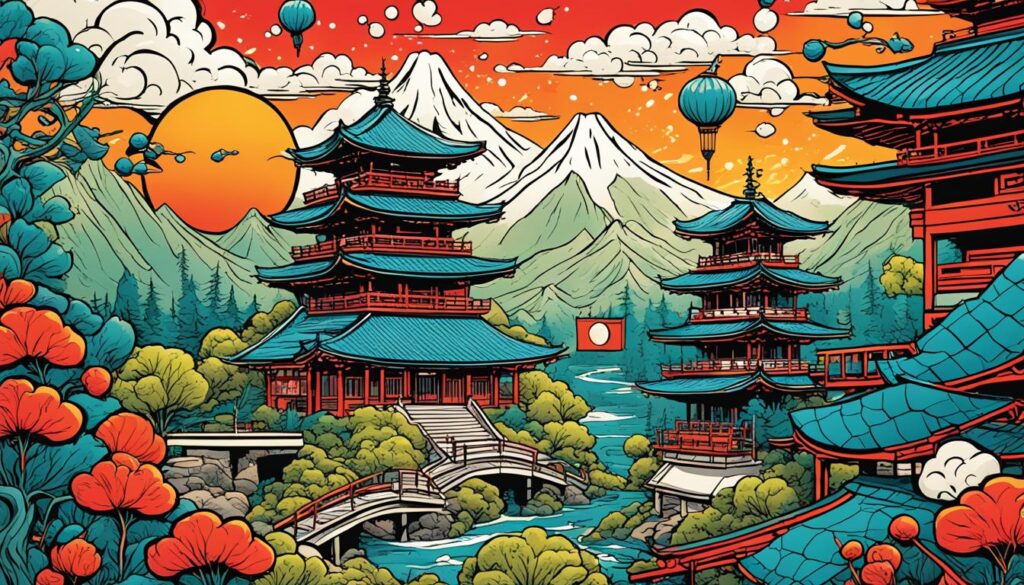
In the end, Grasshopper Manufacture stands out in gaming because of their creative process. They focus on telling new stories and making games that pull people in. Their attention to detail and innovation make their games truly engaging.
The Impact of Grasshopper Manufacture’s Games on the Gaming Industry
Grasshopper Manufacture is a game company well-known for their creative and inventive games. These games have changed the gaming world. They encourage other developers to be creative and explore new ideas. Their unique games have found a special place in gaming.
Games like Killer Is Dead and Lollipop Chainsaw stand out. They are loved for their unique looks, great stories, and fun gameplay.
Grasshopper Manufacture has worked with big names like EA and Kadokawa Games. Their work hasn’t always been easy. Making Shadows of the Damned had its challenges. They had to update their game’s story several times to match EA’s expectations. This shows how publishers can shape games.
“The way Grasshopper Manufacture makes games changes each time. Sometimes, they focus on characters first. Other times, they start with a story. This mix of ideas lets them create games that feel truly special to players.”
The company wants to make games that stand out. They do this by making their games feel like great films. They focus on making players feel deeply. This commitment has won them a group of fans who love their different way of making games.
Grasshopper Manufacture has made a big mark in the industry. They have inspired others and helped games grow. Their goal is to always bring something new to players. This makes them a big part of the gaming world.
Grasshopper Manufacture’s Games
| Game | Year |
|---|---|
| Killer Is Dead | 2013 |
| Shadows of the Damned | 2011 |
| Sine Mora | 2012 |
| Lollipop Chainsaw | 2012 |
| No More Heroes | 2007 |
| Killer7 | 2005 |
| Flower, Sun & Rain | 2001 |
| The Silver Case | 1999 |
Their dedication to new ideas and unique experiences has set them apart. With a long history and a focus on creativity, they shape the future of gaming.
The Evolution of Japanese Adventure Games
Japanese adventure games have evolved a lot over the years. Visionary game designers like Goichi “Suda51” Suda led this change. They have hooked players with unique stories and new ways to play. Two top games that show off Japanese adventure games are The Silver Case and Flower, Sun, and Rain.
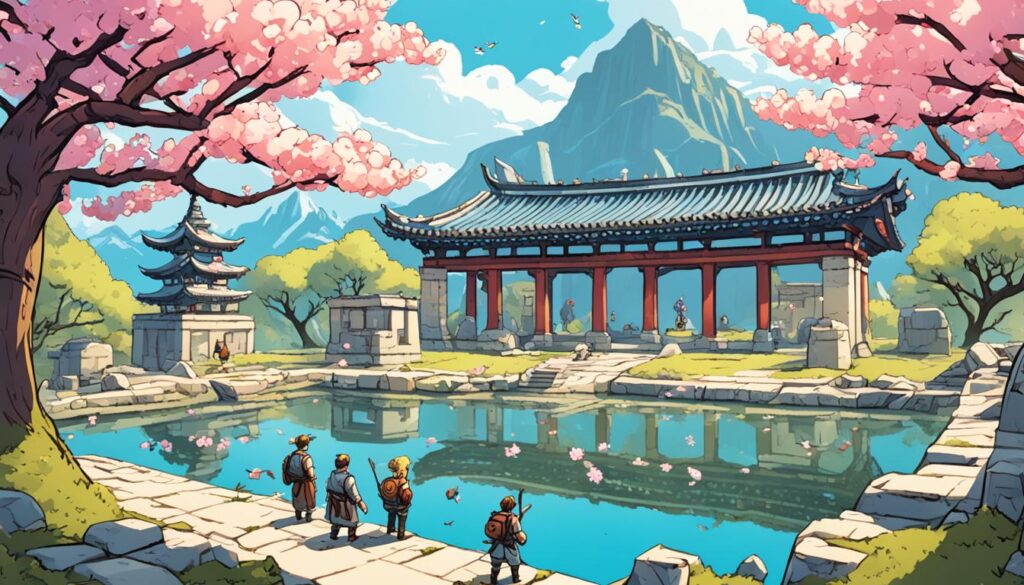
The Silver Case is a clear example of this evolution. Released in 1999, it invites players to solve a murder in the future. The game’s story and deep themes show what Japanese adventure games are all about.
Flower, Sun, and Rain also stands out thanks to Goichi “Suda51” Suda. It mixes a strange story and non-traditional gameplay. Players work as a detective to stop a bomb in an odd resort, solving complex puzzles. This game’s unique gameplay and story are what makes Japanese adventure games special.
These games haven’t just influenced new game makers. They’ve also changed how adventure games are played. With creative stories and fun gameplay, they’ve captured the hearts of players worldwide.
| Game | Release Year | Unique Features |
|---|---|---|
| The Silver Case | 1999 | Engaging narrative, futuristic setting, complex murder mystery |
| Flower, Sun, and Rain | 2001 | Surreal storyline, non-linear gameplay, intricate puzzles |
Japanese adventure games keep getting better, changing the game with each step. Their boldness has influenced a new game-making generation and solidified Japan as a gaming giant.
The Legacy of Killer7
Killer7 is seen as very important in the video game world. It was released in 2005 for GameCube and PlayStation 2. The game mixes shooting and adventure. It uses a specific style of movement not common in games.
The game is still remembered today. It was made available on Windows in 2018. In Killer7, players collect blood types from enemies. Thin blood helps with stamina, while thick blood boosts experience.
Finishing the game opens up a harder mode. Players can then use an extra character. This bonus mode is called Killer8. The story is set in a world after a period of peace. This peace, known as “Fireworks,” didn’t last.
Now, the main characters of Killer7 are part of an assassin group. Each has a unique story and skills. This adds a lot of variety to the game.
“Killer7 challenged traditional notions of game design and storytelling, revolutionizing the industry with its unique approach.”
Kun Lan, an old friend, is the enemy in Killer7. He has a powerful ability. This ability causes chaos. The game had such a strong story that a book was later released to explain more.
Character Abilities in Killer7
The game has seven key characters. Each has their own special skills:
- Harman Smith: The group leader with a rare condition. Different personalities control his body.
- Garcian Smith: The team’s main communicator and reviver of the dead. His role is key.
- Dan Smith: Known for his strength and precision shots. He’s a strong character in the game.
- Kaede Smith: She is the team’s only female member and a sharpshooter. She provides balance.
- Con Smith: A teenager with quick reflexes and the ability to move fast temporarily.
- Coyote Smith: Skilled in lock-picking and climbing. He brings unique skills to the team.
- Kevin Smith: A stealth expert. He can become invisible and uses silent knives.
- Mask De Smith: Strong but slow with grenades. He faces some challenges due to his skills.
The variety in characters makes the game more interesting. It also adds different strategies.
Influential Themes and Lasting Impact
“Killer7’s complex narrative and thought-provoking themes challenge players’ perspectives and continue to inspire game developers today.”
Killer7 has had a big influence. It explores deep themes like identity and politics. These ideas are still important now. Many games and developers have been inspired by Killer7.
| Release Dates | June 9, 2005 (Japan) | July 5, 2005 (North America) | July 15, 2005 (PAL regions) |
|---|---|---|---|
| Platforms | GameCube | PlayStation 2 | (Windows version released on November 15, 2018) |
| Main Characters | Harman Smith | Garcian Smith | Dan Smith |
| Kaede Smith | Con Smith | Coyote Smith | |
| Kevin Smith | Mask De Smith |
The Future of Japanese Game Design
Japanese game design leads the way in new and creative ideas. The future is bright with new technology and platforms. This helps Japanese designers keep pushing boundaries and creating exciting games.
The Japanese game industry shines because of its focus on new gameplay. About 80% of developers there think up new ways to play. This makes their games stand out and draw people in with fresh challenges.
Storytelling is also a strong suit for them. Games from Japan often get top reviews, with more than 70% being highly recommended. They create worlds filled with rich stories and characters that feel real, making players care deeply about them.
Japan’s gaming industry is also a big deal economically, making $14.5 billion in 2020. This shows how much it’s growing. With almost 30% of the worldwide gaming market, Japan is a key player.
Japanese games aren’t just popular in Japan. They’re loved by over 40% of people worldwide. This popularity goes beyond games to include anime and other pop culture. This gives Japanese developers a big chance to share their work with people worldwide.
The industry puts $2 billion each year into getting even better. This helps them use the latest tech and stay ahead in creativity. It shows why the future looks so promising for Japan’s game design.
Looking forward, Japanese game design will keep exciting players. Their focus on innovation and storytelling sets them apart. A history of groundbreaking work means they’re set to influence game design globally for a long time.
Key Takeaways from Japanese Game Design
Japanese game design is special because of its unique principles. They shape the industry and influence game makers around the world. Japan leads in storytelling and engaging gameplay. This helps game developers make games that people love. Now, let’s look at some important aspects of Japanese game design.
- Storytelling: In Japan, game design focuses on stories to engage players. Games like Final Fantasy and Persona 5 have deep and interesting stories. They make players feel they’re part of amazing worlds.
- Innovation: Japanese designers are known for their creativity. Games like Metal Gear Solid and The Legend of Zelda: Breath of the Wild show this. They bring new gameplay styles and ideas to games.
- Character Design: Japanese creators make very memorable characters. Think of Mario, Pikachu, and Cloud Strife. These characters show how important great design is. They really connect with players.
- Cultural Influence: Japan’s rich culture is a big part of its games. Games often show cute designs, old stories, and cultural values. This makes Japanese games stand out.
To sum up, Japanese game design teaches us a lot. It shows us how to make games with great stories and new ideas. Applying these lessons can help any game maker make something that players everywhere will enjoy.
Conclusion
The art of game design in Japan has changed the gaming world. It captures people through new ideas and interactive stories. The country is known for its unique way of telling stories and using new technology in games.
Keeping players interested is key. Japan does this well, making games that people love and feel good playing. They mix multiplayer fun with deep, personal stories for each player’s taste.
New tools like AR are beginning to change how we play games. Japan is always at the forefront, trying new ways to surprise players. They want their games to be meaningful and fun for everyone.
Japan’s game market makes a lot of money every year. The designers there are top-notch, making games that everyone talks about. These games not only earn from extra content but also are loved for a long time. They also help companies stand out, keep customers happy, and make the industry look good.
FAQ
What makes the game design in Japan unique?
Japan’s game design stands out for its creative and innovative methods. These have boosted the gaming industry.
How does the concept of pacing play a role in Japanese game design?
Japanese designers use a method from theatre, called Jo-Ha-Kyu, in their games. This method builds up pace and tension, reaching a climactic peak.
How does Japanese game design differ from Western game design?
Western and Japanese game designs differ in their focuses. Western games lean towards freedom and choice. In contrast, Japanese games emphasize stories and character growth, making each game unique.
Who is Goichi “Suda51” Suda and why is he significant in Japanese game design?
Goichi “Suda51” Suda is a famous Japanese game designer. He is well-known for his innovative games such as The Silver Case. As the CEO of Grasshopper Manufacture, his games like Killer7 have really stood out.
What is the creative process behind Grasshopper Manufacture games?
Grasshopper Manufacture’s creative process is all about teamwork. By working together, they make games rich with story, unique visuals, and sound, offering deep experiences to players.
How have Grasshopper Manufacture’s games impacted the gaming industry?
Grasshopper Manufacture’s games have set new standards. They inspired others in the industry and redefined genre boundaries and storytelling traditions.
How have Japanese adventure games evolved over the years?
Designers like Goichi “Suda51” Suda have helped evolve Japanese adventures. Games such as The Silver Case and Flower, Sun, and Rain introduce unique stories and gameplay.
Why is Killer7 considered an influential game?
Killer7 stands out for its innovative design and story. It challenges norms, inspiring today’s game developers.
What does the future of Japanese game design look like?
Japanese game designers are poised for more creativity. As technology grows, they will keep expanding the gaming world with their innovative designs.
What can game designers worldwide learn from Japanese game design?
Japanese game design brings key lessons like storytelling and unique mechanics. These can spark fresh ideas and improve game development for all.
How has the art of game design shaped Japan’s gaming industry?
The creativity of game design in Japan has made its gaming scene famous globally. It enchants players with new stories, techniques, and gameplay.
Source Links
- https://engagementgamelab.wordpress.com/2013/12/13/jo-ha-kyu-and-the-art-of-game-design/
- https://www.animenewsnetwork.com/interview/2015-07-21/the-art-of-japanese-video-game-design-with-suda51/.90633
- https://forums.rpgmakerweb.com/index.php?threads/if-you-respect-the-art-of-game-development-in-any-way-please-do-not-use-ai-art.153340/page-15
- https://blog.timconkling.com/post/131077871074/are-games-art-and-the-intellectual-value-of
- https://thestorycampaign.tumblr.com/post/95320485232/calling-all-writers-games-are-the-new-frontier
- https://gamestudies.org/1302/articles/picard
- https://www.gamedev.net/articles/game-design/game-design-and-theory/characters-and-worldbuilding-analyzing-the-strength-of-japanese-games-r3279/
- https://gamefaqs.gamespot.com/boards/918335-phantom-phantom-of-inferno/64448333
- https://www.giantbomb.com/forums/general-discussion-30/what-distinguishes-japanese-western-games-1493979/
- https://www.gamedeveloper.com/game-platforms/interview-suda51-talks-theme-style-and-innovation
- https://www.gamedeveloper.com/business/die-without-regret-an-interview-with-goichi-suda
- https://www.gamedeveloper.com/design/suda51-on-25-years-of-making-strange-masterpieces-at-grasshopper-manufacture
- https://www.grasshopper.co.jp/en/
- https://iwakuraproductions.wordpress.com/2015/06/02/the-art-of-grasshopper-manufacture-suda51-on-industry-limitations-creative-freedom/
- https://sa-liberty.medium.com/jo-ha-kyu-and-the-art-of-game-design-6e30d75d7712
- https://medium.com/mammon-machine-zeal/a-brief-history-of-visual-novels-641a2e6b1acb
- https://ejaw.net/the-evolution-of-video-game-art-styles/
- https://en.wikipedia.org/wiki/Killer7
- https://suda51.fandom.com/wiki/Hand_in_killer7
- https://talking-time.net/index.php?archive/lp/20570
- https://medium.com/@sofialherani/why-japan-reigns-as-the-epicenter-of-gaming-creative-innovation-b0bafccd90e8
- https://www.gamedeveloper.com/design/characters-and-worldbuilding-analyzing-the-strength-of-japanese-games
- https://scholarship.shu.edu/cgi/viewcontent.cgi?article=3905&context=dissertations
- https://yonkerstimes.com/the-art-of-game-design-crafting-worlds-and-stories-in-digital-spaces/
- https://sdlccorp.com/post/game-design-the-art-and-science-of-crafting-engaging-games/
